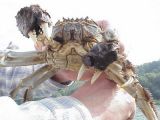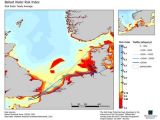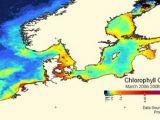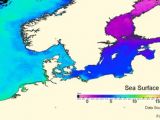In an attempt to protect the marine environment, because every day, thousands of different organisms are being moved from their natural habitat in water used as ship ballast, satellites are being used to supervise areas at risk from ballast water exchange.
Having plants and animals hang on to a ship's hull is nothing new, it's been happening for centuries now, but ever since the widespread introduction of water-tight hulls in the nineteenth century, the problem of marine invasions has become a real concern.
Estimations say that nearly ten billion tonnes of water, carrying micro-organisms, eggs, larvae and larger organisms, are now being transported worldwide as ballast, every year.
And this is becoming a major problem, especially in coastal waters, since the intrusion of harmful aquatic species and pathogens through ballast water is currently one of the highest risks to the marine environment.
The International Maritime Organization (IMO), in response to this problem and hoping to prevent some devastating effects, elaborated the ‘International Convention for the Control and Management of Ships' Ballast Water and Sediments’.
This convention is currently being ratified and it should be effective in 2013.
Germany's Federal Maritime and Hydrographic Agency (BSH) is responsible for ballast water management in German waters, so in an attempt of supporting this institution, the European Space Agency (ESA )is providing satellite data for a case study that will assess the environmental risk posed by ballast water.
ESA's Data User Element Innovators II Ballast Water project supports BSH as well as the decision-making processes concerning ballast-water management in the North Sea and Baltic Sea before the ratification of the IMO convention.
The project will analyze two things: the Ballast Water Risk Index and the Average Risk Index – 'risk' meaning the survival chances for alien species released into the sea.
BSH worked with the ESA on a model to calculate this risk, following the International Maritime Organization's recommendations.
The risk indexes are calculated after considering a number of different marine data, like sea-surface temperature, ocean color and water transparency, which are provided largely by ESA's Envisat mission.
For example, the data on the color of the ocean, given by the optical MERIS sensor, is important in the assessment of algae; in high concentrations, algae could be a good food supply source for alien species, but if the waters are clear, the introduced species are less likely to survive.
Data is also collected from thermal-infrared scanners which provide information on sea-surface temperature, so that the similarities between source and destination habitats can be assessed.
This way, ships can have mapped regions where they should or should not exchange their water ballast.
There is a proposition for a dedicated website to integrate all this data and provide near real-time information on the water quality and the risk for the marine environment.
“ESA is providing the basis for international discussion in the North Sea region for finding exemption zones,” said Kai Trümpler, from BSH and the Interreg project.
“They will be of immediate practical value and have an impact on ballast water management regulations in this area.”
On 25 January, a workshop will be held in Hamburg, Germany, and the possibility of expanding this program across North America and throughout Europe, will be discussed.
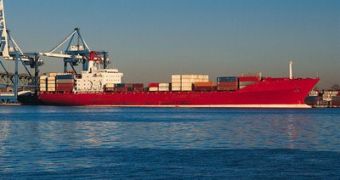
 14 DAY TRIAL //
14 DAY TRIAL // 
